
March - April - May 2022 - Welcome
Sources
Search
Contact
Home
Welcome
Click on year to expand
2022
2021
2020
2019
2018
2017
2016
2015
Welcome
![]() A Slow Month
A Slow Month
Maybe it is coming out of COVID, or just the transition from winter into spring, but I seem to be in slow motion with my collection. It can also be that I have a lot of things up in the air with no immediate resolution, and it just seems like I have made no progress. But progress will come soon.
![]() Back from PCGS
Back from PCGS
We have all noted with some angst the slow turnaround from PCGS in recent months. After some prodding I finally got them to complete the reholdering, photography, and identification of five coins. These had been there for months, so I am just happy to get them back.
I first mentioned these coins back in December of last year, so you can see where my frustration came from as time passed. You can see them by going to the December Newsletter. The most important coin in the group was an MS64+ VAM 27 - Double Ear 84127940. PCGS confirmed it and it is now the highest graded VAM 27 in their inventory.
![]() New VAMs
New VAMs
In my last newsletter I wrote that I believe there are four new VAMs contained within the group of coins we had classified as VAMs 1 and 1A many years ago. These coins can be described as:
- Doubled BER, Doubled Date, Spike in 8, Pitted Wing-Neck Gap
- Same Reverse as Type A; No Spike in 8, Doubled 18, Notched Right 1
- Buck Tooth, Dot in Left Leaves
- Double Profile, Polish Lines in Front of Eye, O Tilted Right, Die Chip Wing-Neck Gap
We may have also identified a VAM 27 - Double Ear that is clashed, but this requires more study.
These will go to JB in June for review of possible discovery coins.
![]()
Antebellum and Postbellum Mint Superintendents
Now that a great deal of the die fingerprint work is behind me I plan to return to the study of the Mint Superintendents in New Orleans. We stopped this study with the onset of the Civil War, so time to get back to that look into time.
1837 - 1839 David M. Bradford
1839 - 1850 Joseph M. Kennedy
1850 - 1852 Robert M. McAlpin
1853 - 1857 Charles F. Bienvenu
1857 - 1861 William Augustus Elmore
1876 - 1878 Dr. Maximilian Ferdinand Bonzano
![]()
Reopening the Mint
We feel like we have to add Maximilian Ferdinand Bonzano here as a Mint Superintendent even though he is never officially listed as one. Dr. Bonzano was probably the key figure during the life of the Mint and played pivotal roles before and after the Civil War.
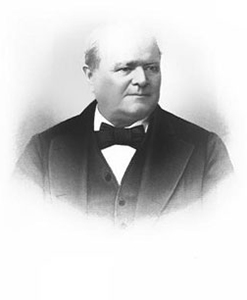
After the close of the Civil War he was chosen as the person to return to New Orleans to assess the condition of the mint building and machinery. He became a sort of defacto mint supervisor while heading the assay office from 1876 until the opening of the Mint for coin production in 1879.
Dr. Bonzano was born in 1821 in Germany and came to America with his father and one brother in 1835. His mother, four younger brothers, and two sisters stayed behind in Germany while the elder Bonzano worked to establish himself. They settled in the Red River area and worked at a fledgling newspaper. But a yellow fever epidemic in 1837 forced them to seek refuge first in Galveston and then on to Houston, Texas. Max moved on to New Orleans during this time. These were difficult times with the elder Bonzano passing away in 1839 and his wife dying in Germany in 1844.
Max Bonzano took advantage of the opportunities he found and used his time in the newspaper business to master English. He then apprenticed at a drug store where he devoted himself to chemistry and pharmacy. In 1843 he entered Charity Hospital as a resident student and after graduation became a visiting physician.
Max Bonzano's loyalty was to his adopted Country and when the war broke out he moved north. He returned on June 7, 1862 with the capture of the city by Union forces. He was engaged to assess the damage to the Mint machinery and building. During this time he became a popular figure and was elected as a U. S. Representative but was never seated. At this time an attack by a Southern Congressman forced Congress to refuse to seat any Southern Representatives. Max Bonzano continued to be a prominent political figure in Louisiana throughout the rest of his life.
In 1878 he turned down the job of Superintendent to instead become the Coiner. Treasury Secretary Sherman appointed the Hon. Michael Hahn as the Superintendent of the New Orleans Mint. A Yellow Fever epidemic caused the death of other key figures at the Mint and in 1879 Hahn was removed and replaced by Ex-governor H. S. Foote of Mississippi. Foote died in 1880, but Dr. Bonzano again declined the job of Superintendent.
Dr. Bonzano never married and lived as a bachelor. After his service at the Mint, he purchased and restored a home that was used by General Jackson as his headquarters in the War of 1812. He spent his later years studying science.
Maximilian Fernanda Bonzano was one of the most important figures in the life of the New Orleans Mint. He was one of the stabilizing influences as the Mint went through a series of Superintendents. In our mind he was a defacto Superintendent on many occasions.
![]()
The Devolving VAM 27
It took years for us to acquire a Mint State VAM 27 - Double Ear coin, and then they seemed to be available at reasonable costs.
Like we have done with the VAM 1D - Pummeled Eye, here is a look at the doubled ear feature at different grades starting with our MS 64+ down to our Very Fine 25. We now have 21 examples of this VAM in grades 64+, 62, 58, 55, 53, 50, and 25.
Next month we will add a page to the web site to discuss these in more detail.
![]()
The Normal Ear
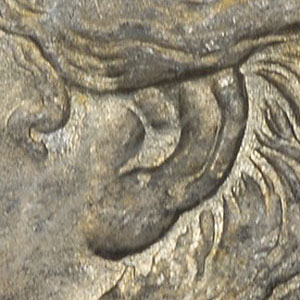
Mint State 64+

Mint State 62
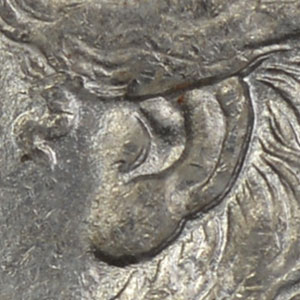
Almost Uncirculated 58
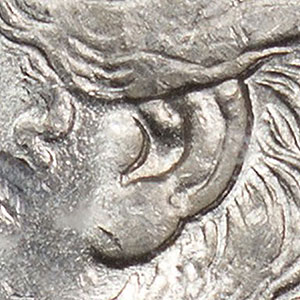
Almost Uncirculated 55

Almost Uncirculated 53

Almost Uncirculated 50
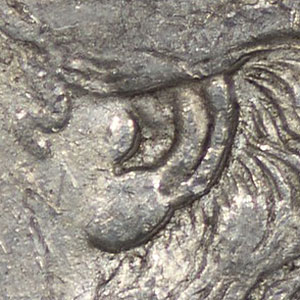
Very Fine 25

Getting Started
Collecting The 1881-O
The 1881-O VAMs





















